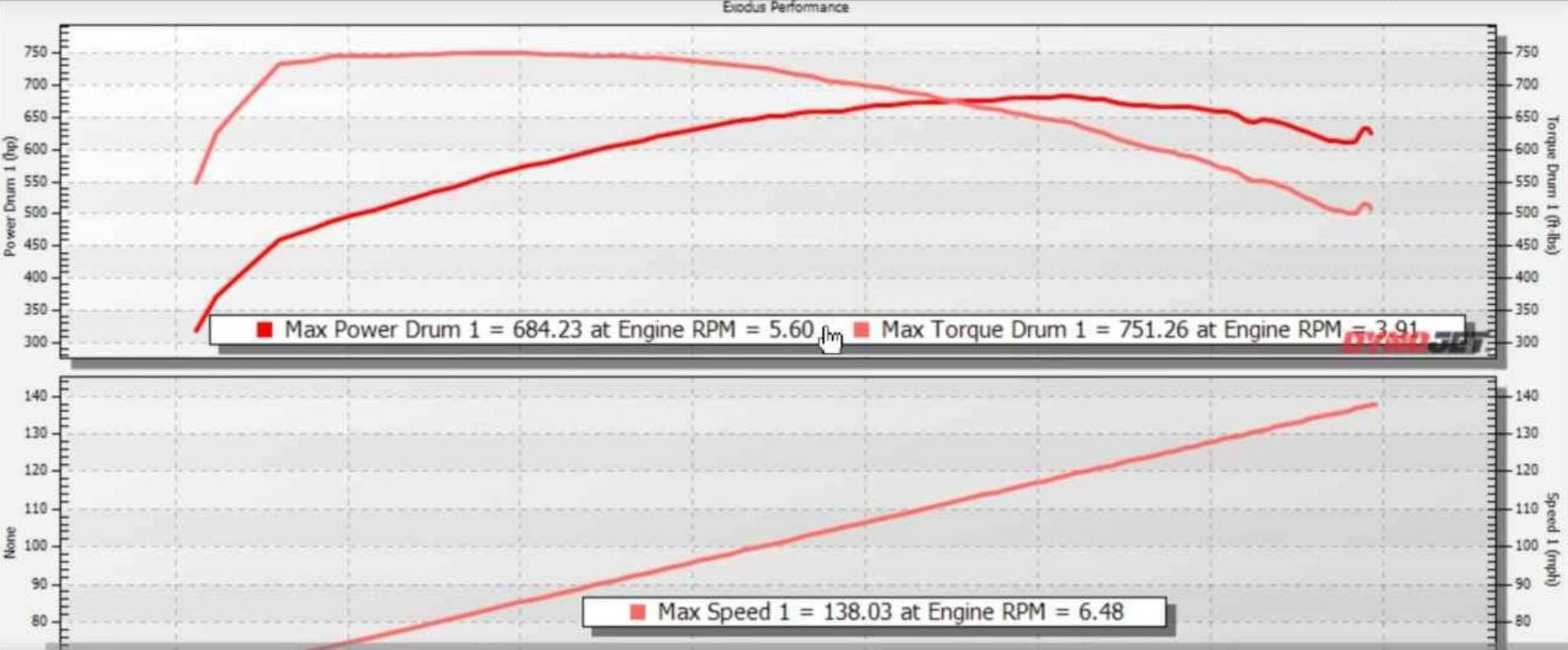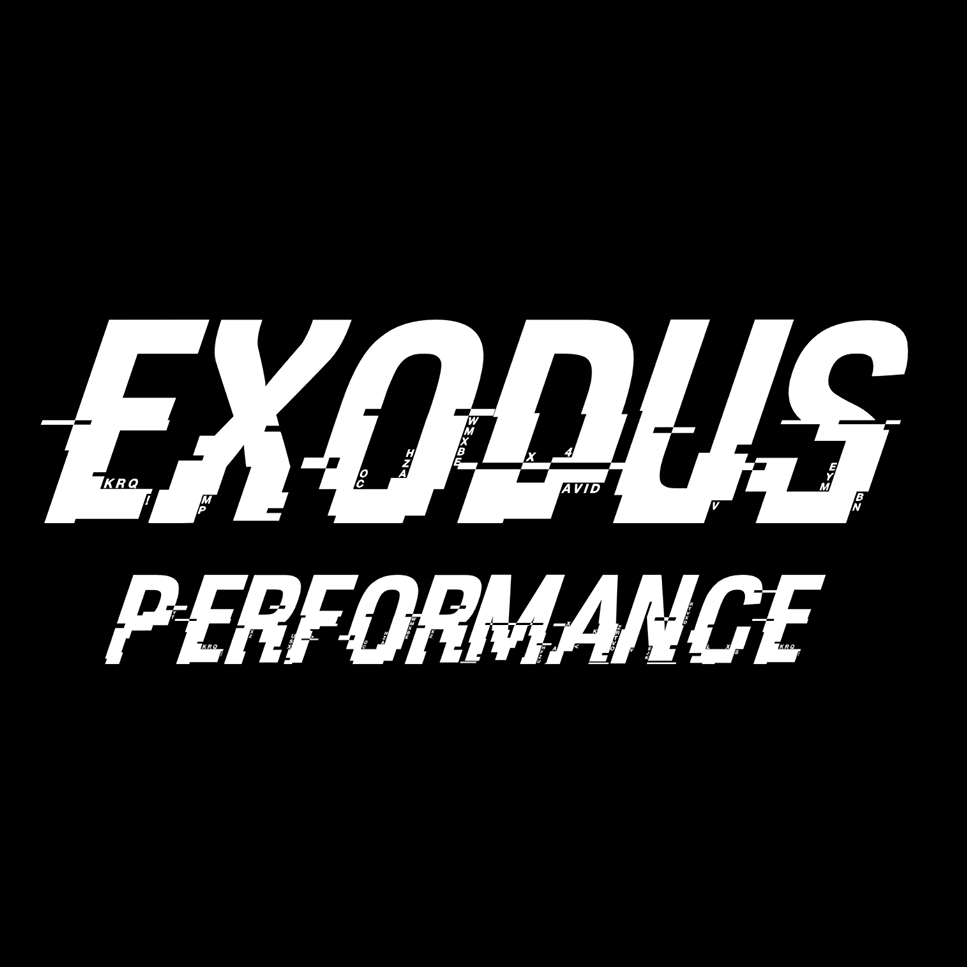2017 ZL1 Modifications
I bought this car with the power mods installed, tuned and tested. One runs the danger of buying someone else's problems when one buys someone else's project. But this car has shown itself to well-sorted and cared for in a vast majority of respects.

The above graph shows a peak 684 bhp and 751 lb-ft torque. Which are great numbers. But what's significant is how early the torque rises under 2000 rpm, how long it stays near peak and how gently it rolls off between ~3800 to ~7600 rpm to 500 lb-ft. This is exactly what I was looking for. As a consequence, the power is similarly smooth with a generous amount of area under the curve.
Understand these numbers are measured at the drive wheels on a chassis dyno. Manufacturers quote measurements on an engine dyno at the crankshaft. Chassis dyno numbers will always be lower due to the friction losses in the transmission and the rest of the driveline. If one considers the rule-of-thumb 15% loss through a manual transmission (20% for automatics), the peaks are at and
Which begs the question, how much power is enough? If you're seriously asking that, this might not be the web site for you. But in practical terms, this car definitely has more power than I can effectively use on public roads. Getting the tires to hook up is a challenge. And I really don't want a tragic or even just an expensive crash. I should probably take it to the drag strip to really exercise its abilities, but that's not quite my cup of tea. I've long said that if I get back to the track, it'll be in an under-powered, light weight Miata helping me learn how to carry the speed through the corners instead of just mashing the gas pedal at the apex.
Power
- Tuning

This car has been tuned and maintained at Exodus Performance in Austin. They have expert technicians for the hardware and a chassis dyno for tuning. I'll certainly be returning for maintenance and updates. Tim did me the favor of retaining the lumpy cam idle without stalling.
The car has a cam of as-yet unknown spec. Suffice it to say, it does not sacrifice torque like some of the more radical grinds. This necessitates supporting hardware including valve springs, rocker arms and possibly pushrods as well.
My ZL1 has a set of as-yet unknown long tube, 4-into-1 headers. It sounds great and I most often find myself listening to this acoustic sound system instead of the radio. But it's loud. A little too loud getting into and out of the neighborhood, even with the factory muffler installed and baffles connected. So I'm careful to keep to the lowest rpms and the highest gear until I get to the main roads.
There's an unknown larger crank pulley to increase the rpms and, consequently, flow volume and pressure through the stock 1.7L Roots-style blower.
The ubiquitous Roto-Fab intake came with my car. It makes entertaining noises, especially when the ECU rescues the engine from a cam idle-induced stall. I suspect it doesn't add any significant horsepower.
Reliability
- Oil Separator
I see a MightyMouse catch can in the front of the engine bay. This device helps remove oil vapor from the PCV system, reducing oil in the intake building up on components including intake valves, a common problem on newer direct injection engines.
- Methanol Injection
A future consideration is a methanol injection system. It serves three primary purposes:
- Intake air cooling, necessary in boosted applications and especially in the Texas heat allowing increased timing and, therefore, power.
- Increased effective fuel octane with related benefits to cooling.
- It cleans the intake system which is particularly important on modern, direct injection engines which don't have that spray of gasoline on the tops of the intake valves to keep them clean.
The car came with an old methanol injection system on it which was disconnected by Exodus due to concern for the age of its components. You don't want the alcohol feed failing in the middle of a high-rpm run, potentially detonating the motor. I had the unused hardware removed, but the fluid reservoir remains since the windshield washer tank it replaced is long gone. I may reinstall the factory windshield washer or add a new meth setup, I haven't decided.
Cosmetics
- Shifter Knob
So I'm a bit of a doofus about the '60s muscle car aesthetic. Similar to the white spheres on the Corvair and the Golf, I ordered a black and a white Delrin knob for this car with the appropriate 6-speed pattern. The plastic doesn't get too cold or too hot and the round knob fits perfectly in my hand. The stock knob is great, but this is my personal choice.
- Vinyl Wrap
As mentioned at the top, I'm not a fan of the colorless gray. The paint itself looks great with a deep metal flake to it. But what if I could give the car an old Pontiac Firebird feel with a Polar White Trans Am stripe down a Lucerne Blue body? The ZL1 hood is sorta shaped like that rear-facing shaker scoop. Maybe in place of the ZL1 badges, a "SC-378" decal for the supercharged 378 cubic inch motor instead of "SD-455" of the top dog second generation Firebird? Cap it off with some reproduction Could be interesting.
But maybe a first generation Camaro Hugger Orange with white Rallye stripes would be more appropriate. It's my car, I can make it look like whatever I want.



